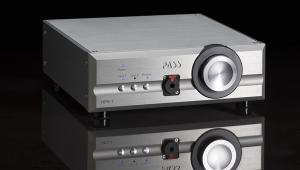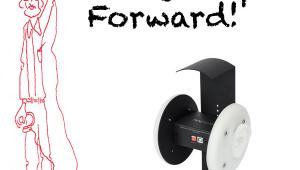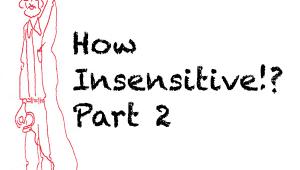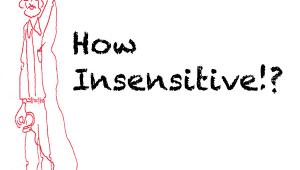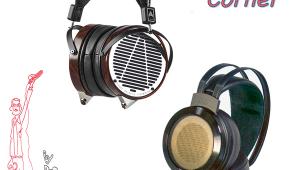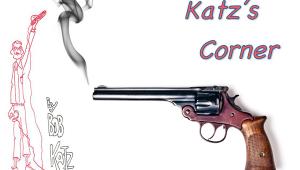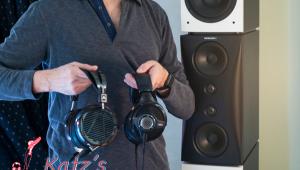| Columns Retired Columns & Blogs |
Katz's Corner: The Great Headphone Shootout - Part 4

This story originally appeared at InnerFidelity.com
On Monday it was raining lions and tigers all day, but four of the faithful eventually arrived, between an hour and two late. Except Mitch Corbin, musician (Suzy Bogguss, David Bromberg, Byron Berline, David Grisman) and project studio owner, arrived early. That was a good thing, because I gave him a solo audition. When the four others arrived, they each had a headphone to check out and shuffle around. Mitch stuck around to learn everyone's reactions and schmooze for the evening, and a wonderful time was had by all.
Mike Chafee (acoustician, system designer, manufacturer's representative) and Shilpa Patel (Engineer, certified Pro Tools instructor and consultant) could not attend the Monday meeting, which was also a good thing, because the group of four each got to hear a headphone without a wait. Shilpa and Mike visited on Tuesday, and I'll report their reactions in a little bit.
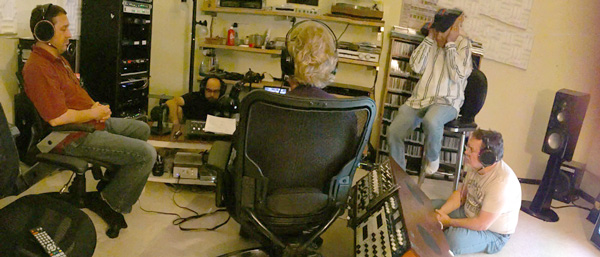
Here's a photo from the shootout.
In addition to the Stax and the three Audeze, we occasionally threw a Sennheiser HD600 into the mix (a familiar reference) and shuffled headphones as well as headphone amplifiers. In many cases we played the same track several times until everyone got to hear all the major headphones with that track. We played much of the same material I used in Part 3, as well as a piece which Aaron Gandia recorded and the following gems, all good acoustic performances, while the Slutz took copious notes:
"You've Got Me", from my 15th Anniversary remaster of Rebekka Pidgeon's seminal audiophile album "The Raven". I transferred this album using my custom tape head and electronics from the original 15 IPS Dolby SR master tape. This is available from HD Tracks at 176.4 kHz and its derivatives. This is the first time this album has been heard with full dynamics. The sound is bigger, much more impacting than the original CD release, which was made by reduction from our ADC at the time, and some of the peaks had overloaded. But the tape retained the full analog headroom. Be sure you download the 15th anniversary remaster. We listened reducing the 176.4 to 88.2k in JRiver because the Prism Lyra DAC is limited to 96 kHz. It retains 99.999999999% of the sound of the 176.4. If you hear differences they are just as likely to be the performance of your DAC at the particular sample rate than any conclusions about the rate itself. Turn it up: By necessity this master is lower in level than the original CD, in order to retain the peaks which had been previously lost.
Andy Gonzalez's "The Body Acoustic" on Chesky Records, the 24/96 from HD tracks. We played track 1, "52nd Street". This gorgeously recorded piece includes muted trumpet, piano, percussion, bass clarinet and a big, fat Latin bass in a spacious complementary acoustic environment. Kudos to Nick Prout, who took over my reins as Chesky's recording engineer. If you like thoughtful combo Latin-influenced jazz, this is a must pick, suitable for audiophiles and just plain music lovers.
Editors Note: Ha! Good choice, Bob. This track is one of my reference tracks. Great space, great dynamics! And Bob Mintzer...good stuff.
Alejandra Robles, lovely Mexican folk singer. We played "Angelitos Negros", mastered by yours truly, the 24/96 master, from the album "La Morena". It's got her contralto voice, strings, deep percussion complemented by upright bass, fiddle, electric guitar, much more. You can purchase her songs as mp3 directly from here, or AAC from iTunes, and I see there are 4 CDs left at Amazon.
"April in Paris", from the album "2 The Max" by Bill Allred's Classic Jazz band, produced by Charlie Bertini, recorded by Andy DeGanahl, and mastered by BK. Although multimiked, this eight-piece combo in the traditional swing band tradition has been lovingly captured with beautiful dynamics, good stereo image and natural warmth. We played the 24/96 master, but the CD sounds great and can be obtained here.
"Blackbird", from the album "Silver Pony", by the sultry jazz singer and Grammy-winner Cassandra Wilson. Produced and recorded by the great John Fischbach (Stevie Wonder and many more) and mastered by me, this album has wonderful ambience, great playing, led by Cassandra's golden contralto voice. We played the 24/96 master, but the CD, which sounds great, is available at the usual stores.
Time for the Verdicts
While we adjusted listening levels simply by ear, when you average multiple listener's reactions they (hopefully) gain credibility. Our reactions are not blind, the conclusions were reached listening to a wide range of music and all the listeners were quite serious about their comments.
Amp Reactions
Even though none of us ever drove the Burson beyond about 90 dB average during the test, which is an idle task for this amplifier, it gave the impression of having great power in reserve. Like a Ferrari F12 idling at the pitstop, you sense its raw power, ready to take off. The Burson has that authoritative quality. Everyone preferred the Burson amongst all 5 amplifiers. They also agreed with my assessment that the Burson is warmer, more full-bodied than the Schiit, also wider with better separation, and clearer; the difference is not subtle. I mean "warmer" in a nice way, not thick or mushy, with good detail. One participant thought the Burson is so musical it must be a tube amp, but of the "good kind".
The Benchmark and the Prism headphone jacks measure well but our panel felt they are not in the same league as the Schiit or the Burson. Basically the dynamic amplifier rankings went: Burson, followed by Schiit, Benchmark and lastly, Prism. We'll consider the Stax amp as a package inseparable from the headphones.
Conclusions: Don't trust a THD reading.... THD measurements seem to have no correlation with perceived sonic quality (no surprise). But THD can be an early warning of a defect or issue in the amp's design or performance over time, so they are still useful, and we still should settle the low frequency issue that I measured.
Headphone Reactions
There was little concensus amongst my listening panel. They seem to polarize in two camps, X lovers and 3 lovers. All agreed that the Sennheiser HD600 is showing its age and much outclassed by the later models. Most frequent comments about the Sennheiser: "too soft" or "veiled". That's not to imply that "brighter is better", but simply that the tonal character of the HD600 is overly dark.
It's sad that the review X's leaned slightly to one side by about a dB, but I compensated for that often in Acourate Convolver. This did not seem to sway anyone's opinions, but some of the engineers in the group noticed when a center channel vocalist was half a nose away from center. I notified the Cable Company about this issue so they could send the phones back to Audeze for a checkup.
Charlie Bertini (Producer, Musician, Applejazz Records) - "I like the LCD-3 and the 2 with the Burson. The X sounds like compression, seems to compress the space. The 3 is rewarding, satisfying. The 2 is neutral but not as satisfying. I don't want to listen to the X after hearing the 2s and 3s. The Stax shows some masking of some notes. I prefer the 2 and the 3 to the Stax. The Schiit is fine for what it is and beats the Benchmark amp."
Dave Brown (Engineer, Producer, Studio Owner) - "I only heard the Stax on one thing. On Paul Simon, on the 3s the bass seemed more even. I prefer the Audeze to the Stax. The Xs weigh too much. I like the 3s over all others. The 2s are not as detailed as the others, however, they are excellent references and pleasure phones."
Aaron Gandia (Engineer, Mixer, Loudspeaker Designer) - "On the Benchmark, with the 2s and 3s I want to EQ the 5k down. It's too harsh. On the 3s with vocals, the low end was better. With the Xs I hear better transients, but the top end gets somewhat lost on the Benchmark. The 3s sound best on the Benchmark. On the Schiit, the sound got wider and more open.
I don't think Aaron got enough listening time on the Burson. After we got together and compared notes, I pointed out to him the bass accuracy issue. I urged him to compare the bass of the 3s and Xs using a recording which he mixed and knows. We returned into the room for a relisten and at that point Aaron was reconsidering and now he prefers the Xs for their accuracy, at least in the bass region.
Greg Begland (Equipment Designer, Loudspeaker Designer, Audiophile): "I prefer the Xs. I like the Schiit. Only the X reproduces the kick drum well. The Xs open the air. Vocals sound a little sibilant on the 2s and the 3s, but not the X.
Mitch Corbin - "I like the 3s."
On Tuesday Charlie had taken his Schiit amp and 2s back home, but S.P. and M.C. got to compare the Xs, 3s and the Stax.
Shilpa Patel - "Overall I prefer the sound of the Xs. I think they have a true frequency response, and everything is clear. The 3s are a little harsh sounding when listening to the female singers. So maybe it's the high frequency response of the 3s that gets to me. I just know the Xs to my ears seem to be the most even across all the different songs we listened to."
Mike Chafee - "I definitely prefer the presence of the 3s to the Xs and the Stax."
As you can see, we have quite a variety of opinions. I feel comfortable to say that the X's are probably more tonally neutral than the 3s compared to the reference loudspeakers and using known masters, but many might consider the Xs to be too laid back, depending on your personal preferences. Different strokes for different folks. And that's why Audeze makes three models of headphones, oops, excuse me, six or more now! In my fifth installment we'll see how the phone which I purchased rates and then shake up the whole landscape.
- Log in or register to post comments

